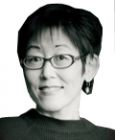
Bias
For Students, Perils of Weight Bias, Anti-Obesity Programs
Guidelines for childhood obesity prevention programs, exposing bias.
Posted September 24, 2013
The anti-obesity movement is an area of contention for many who are fighting the battle against weight stigma. It’s fraught with dangers, these experts say, especially for the student being bullied about weight.
Deb Burgard PhD, a psychologist and eating disorders expert, says “I don't think there’s any question that because of the number of references to childhood obesity in the media and at schools [discussion of weight] is much more frequent than it used to be."
“It’s all well-intentioned,” Burgard notes, but not for the many stigmatized kids she hears from who say, “When you talk about getting rid of childhood obesity, I think you want to get rid of me.” The message of the movement can be taken as, “These are the right groups to be from and these are the wrong groups,” she explains. “Kids say ‘I am fat,’ not, ‘I have fat.’ We have to make the environment, the world, a safer place for them.”
To put this goal into action, Burgard and two of her fellow members of the Academy of Eating Disorders authored an extensive set of guidelines for childhood obesity prevention programs that she describes as “pretty radical.” The guidelines reflect how passionately eating disorders experts feel about the topic. Says Burgard, strong: “This is not a small group of kids” who will potentially be affected. Including the number of people who, as a result of being exposed to one of these programs, at some point end up grappling with weight dissatisfaction, weight cycling, or fear of food, Burgard says, that number is “really high, higher than [the number of people who will face] diabetes later in life.” Unwittingly the anti-obesity movement, for kids who are heavier than average, or “thin kids terrified of being treated like the ‘fat kids,’” she says, “is unnecessarily cruel and stigmatizing.”
One teacher whose middle school has become so polarized over the issue of weighing students contacted me but was too fearful to speak on the record about it. Although her Midwestern school opted out a taking part in a fitness program that required weigh-ins and BMI calculations, this year the school is being forced to participate. The program is based on a computer software program that calculates a set of variables, such as flexibility, muscle strength, endurance and body composition, with weight as a factor.
The teacher, who has taught health and knows how sensitive middle schoolers can be to issues of weight, shape and size, notes, “Kids don’t like to be measured.” When the school board voted to make participation mandatory, the outcry, both for and against the program, became intense. “It’s been brutal,” reports the teacher.
I also spoke to the Rev. Dr. E-K. Daufin, a communications professor at Alabama State University who teaches a mass media and society course and fights weight stigma at her historically black university. Not only is there a lot of weight bias on campus, she reports, but students tend to be resistant to her message of awareness. A few are “relieved” to hear criticize the diet and beauty industry yet others, she says “are angry because they think I’m taking away the dream they have of finding a diet that will work and give them the love and approval of others.”
Asked about studies that have found that African American society tends to be more tolerant of larger-sized women, Rev. Daufin calls them “balderdash, almost all done by thin white people.” Whereas black women in the past might have aspired to a size ten on average, now, she says, “Size eight typically seems to be our goal.”
Linda Bacon, PhD, author of Health at Every Size and a nutrition professor at City College of San Francisco, teaches course on nutrition, health, and social justice. One of the very difficult things for young victims of weight bias, she notes, is that they don’t know what weight bias is. “So when someone taunts them because of their weight, they automatically feel guilty, as if they deserve it.” Bacon says educators “need to first get proactive in recognizing bias when it doesn’t get reported and acknowledged…that’s a much bigger issue than the small number of cases that do get reported."
Bacon likens weight bias to other forms of discrimination, such as racism, but adds, “There are very clear ways weight differs from all other forms of oppression. We have some awareness that racism is not okay even if people practice it. Weight bias is something sanctioned from the perspective of the public health establishment and government.”
When students come into her courses, Bacon says they’re full of typical societal judgments about eating, shape and size: Thinner is better, thinner is healthier, thinner is morally superior. "This is just ‘reality’ to them," she notes, "they don’t even see this as bias.”
Her first job is to make student become aware of the weight bias they’ve absorbed from our culture, to show that "everybody has got their bias, their belief system, and if they’re not seeing bias in a teacher or textbook, that means that the teacher or textbook is expressing views of the status quo—which in itself is a bias.”
Once students begin to recognize weight bias, they can help those who are its victims by telling the bullied child or teen that losing weight is not the solution to the problem, “show compassion for her situation,” and reinforce that it was the bullying, not the friend who did it, that was not okay.
This post is part of the online event Weight Stigma Awareness Week. For more posts in this online event, click here.



